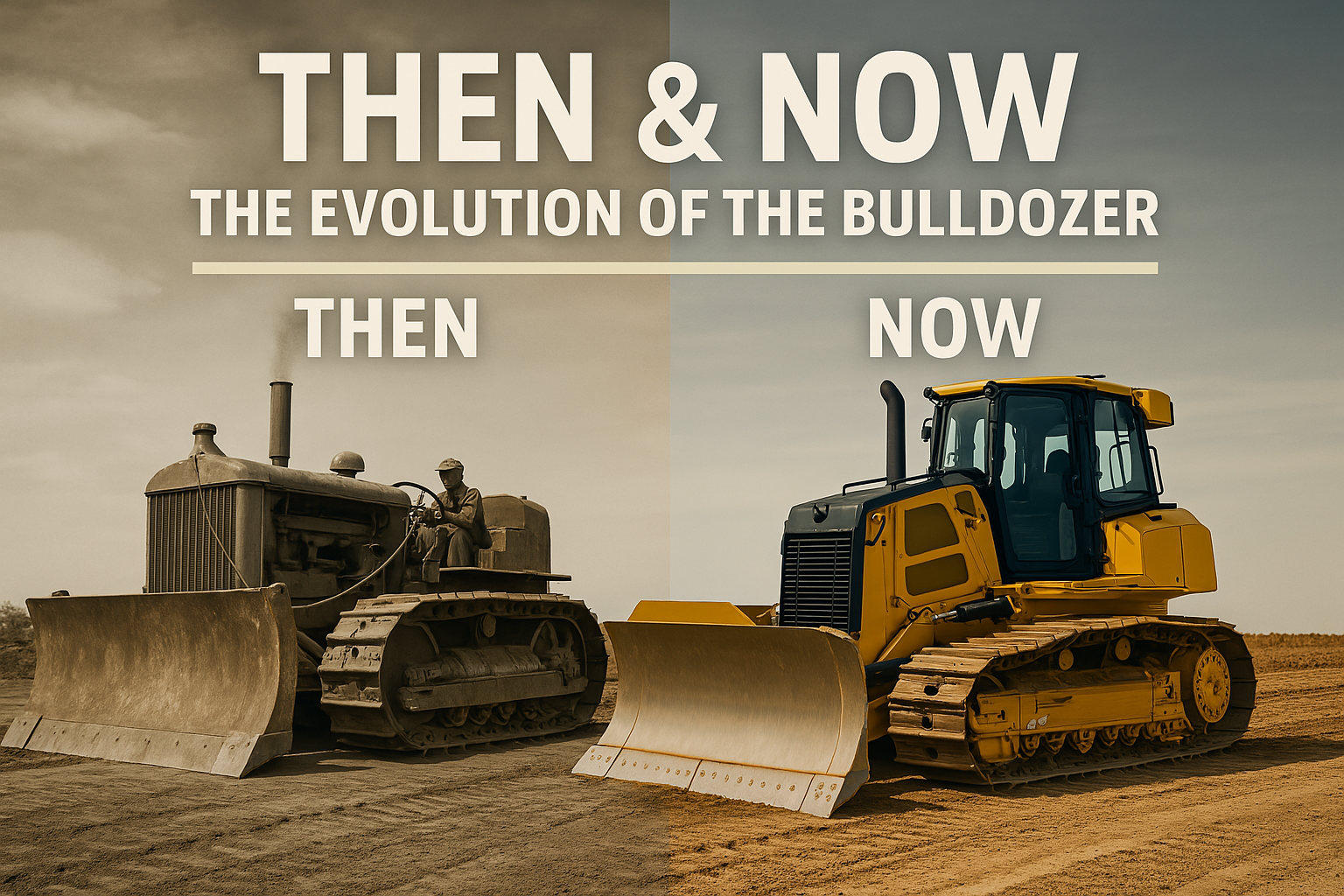Then and Now
The Evolution of the Bulldozer
From Cable-Pulls to GPS-Controlled Powerhouses
If you're into heavy equipment, chances are the rumble of a dozer brings a smile to your face. It’s the machine that shaped skylines, carved highways, and moved mountains—literally. But have you ever stopped to think how far this beast has come?
Let’s roll back the clock.
Back in the Day: Raw Iron & Rugged Operators
The first bulldozers started appearing in the early 1900s, when farmers began rigging plows and blades to tractors. But it wasn’t until the 1920s and ‘30s that we saw purpose-built machines. Think old-school Caterpillar Sixty or the Holt tractors—massive, noisy brutes with cable-operated blades and zero cab comfort.
No heat. No A/C. No suspension seat. Just steel, grit, and a whole lot of noise.
Operating one of these was more like wrestling a dragon than running a machine.
Operators had to manhandle levers, track steering was all cable and clutch, and everything was mechanical. You felt every rock, every slope, every mistake.
And the blades? Controlled by winches and cable systems. Precise grading was more about “eyeball engineering” than exact measurements.
Fast-Forward: Precision Meets Power
Today’s dozers are a different breed.
Take a look at a modern CAT D6 or a Komatsu D71PX. You’re looking at machines that can practically read your mind. Cabs are sealed tight, with touchscreen displays, climate control, and ergonomic seating that would make a long-haul trucker jealous.
Hydraulics replaced cable systems decades ago, and now we’re deep into the GPS era. Grade control systems can hit tolerances down to a fraction of an inch—on the first pass. Some machines even offer remote control or semi-autonomous operation.
Need to slope a pad, cut a road, or fill to grade? The machine knows what to do.
The Soul of the Machine Remains
Sure, the tech has changed. The comfort has leveled up. But one thing hasn’t: the heart of a bulldozer.
It’s still a symbol of raw power, earth-moving dominance, and good old-fashioned hard work.
And the folks who run them? Still the same breed of iron-blooded operators that built this industry.

